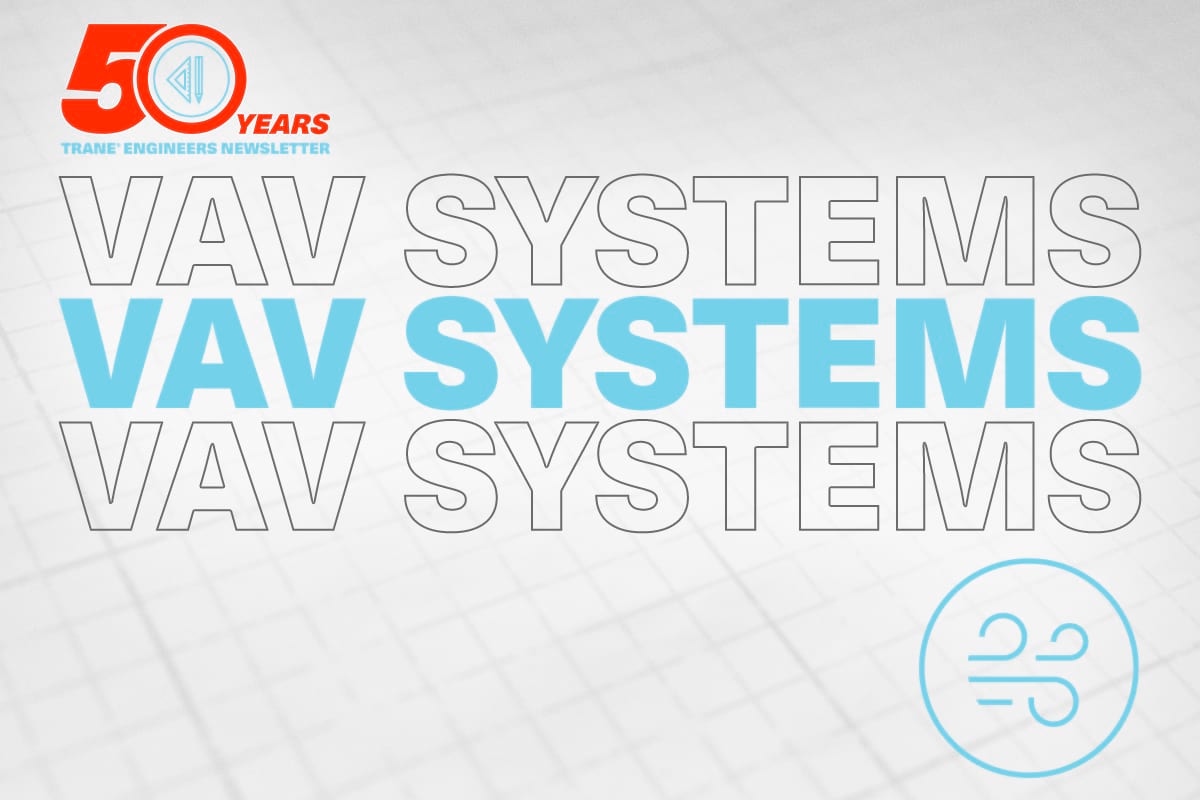Spring has sprung, at least for those of us in the northern hemisphere…for the 50th time since the Engineers Newsletters (EN) was first published in 1972! Be sure to get outside and enjoy the change of seasons. Right now, though, stay here for my segment around the history of the Engineers Newsletters publications.
In my seven years with Trane, one constant companion has been the Engineers Newsletters. For any given topic that I wanted to learn more about, the ENs have been an invaluable, starting point resource. Not only do they consist of relevant information, often references made within lead to deeper understanding. I can’t count the times I have pointed to one of these newsletters (or been pointed to them myself) to understand the why, the how, or the outcomes achieved through system configuration or control strategy decisions.
In this month’s blog post, I’ll reminisce about variable air volume (VAV) systems. There have been over 40 ENs related to VAV systems in some way, shape or form. Going back in time, it’s fascinating to track the advancements of VAV systems, component technologies, system optimization through control strategies, the availability and progression of computer modeling tools, and standards evolution over the past 50 years.
In the 1970s, VAV systems received substantial attention due to the energy crisis of the time and strong focus on saving energy. VAV systems maintain space temperature and humidity levels while saving energy over earlier common systems. A breadth of topics were covered from rooftop units and air handling units to fan and diffuser selections−including implementation of control strategies for various system configurations. The 1977 ENEWS-6/7 “Fan Selection and Control for VAV Systems Airside” covered fan curves, system curves and fan modulation curves–and notably, mentioned the first known VAV installation in 1964.
Throughout the 1980s, focus turned to pressurization control, fan modulation, static regain duct design, and several ENs were devoted to the ‘new’ direct expansion VAV rooftops–which were marketed as DX/VAV systems. In the 1990s, attention was on how the adoption of energy-saving control strategies transformed standards. Demand-controlled ventilation, supply air reset, and fan pressure optimization were integrated into prescriptive requirements over time and ENs were created to help designers understand changing requirements. In the new millennium, refreshers were published to add polish to prior topics (and keep them in view) or to add required refinements reflective of relevant updates to standards.
Even changing social norms are reflected within Engineers Newsletters. In one 1975 newsletter, there was a parenthetical reference to conference rooms that may have heavy smoking due to high population. Imagine what the filters looked like back then!
While Trane doesn’t maintain the full catalog of Engineers Newsletters dating back to 1972 on Trane.com, many of the ‘oldies’ are still relevant today. With that, I’ll leave a few links for you to peruse in your spare time, or if you just need a refresher on a topic you may not have thought about in a while.
- Multiple-Zone VAV Systems-Finding the Right Balance for Energy Savings
- Understanding Single-Zone VAV Systems
- CO2-Based Demand-Controlled Ventilation with ASHRAE Standard 62.1-2004
If you haven’t kept up with the EN blogs, you can find them along with many others here. As always, let us know what topics you’d like to see in the future!


































































































